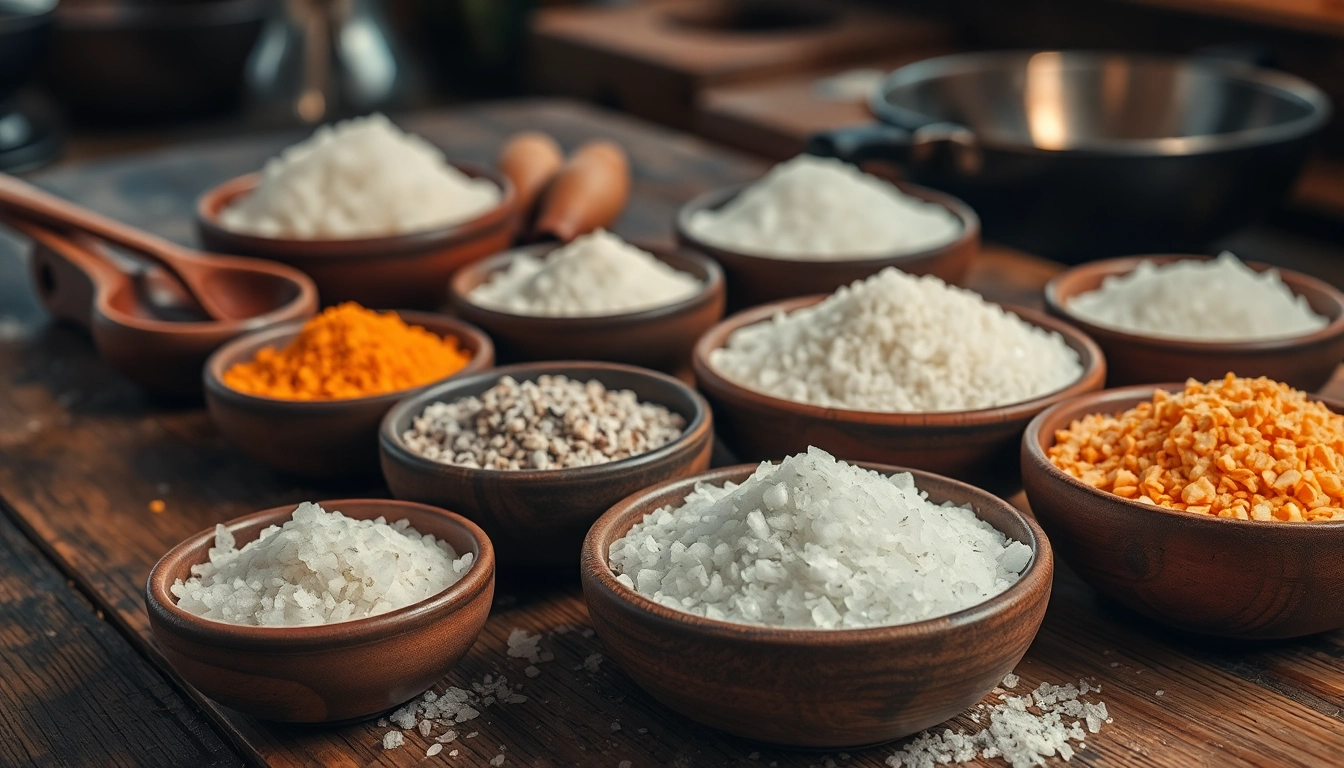Understanding Cinnamon Bark
What is Cinnamon Bark?
Cinnamon bark is the inner layer of the bark from trees belonging to the genus Cinnamomum. When dried, it curls into quills, known commonly as cinnamon sticks, or can be ground into powder for a variety of culinary and medicinal applications. Primarily, there are two popular types of cinnamon bark used worldwide: Ceylon cinnamon, also known as “true cinnamon” (Cinnamomum verum), and Cassia, which is derived from Cinnamomum cassia. Notably, while both have culinary uses, they possess differing flavor profiles and health properties.
Historical Significance of Cinnamon Bark
Cinnamon has a rich history that dates back over 4,000 years. Its use has been documented in ancient Egyptian texts where it was valued not only for its flavor but also for its preservative qualities in mummification practices. Over centuries, it has transcended cultures, enjoyed prominence in trade routes from the Middle East to Europe and Asia. During the spice trade, cinnamon bark was once considered more precious than gold and was used as a form of currency. Its medicinal uses were noted in ancient texts, solidifying its place as a revered spice and herb across civilizations.
Types of Cinnamon Bark: Ceylon vs. Cassia
Understanding the difference between the two main types of cinnamon bark is essential, particularly when considering health benefits and culinary applications.
- Ceylon Cinnamon: Known as true cinnamon, it has a sweeter and more delicate flavor compared to Cassia. Ceylon cinnamon is characterized by a lighter brown color and a soft, pliable texture. It is recognized for having lower levels of coumarin, a compound that can pose health risks in large quantities.
- Cassia Cinnamon: Commonly referred to as Chinese cinnamon, it is often the type found in supermarkets. Cassia has a stronger, spicier flavor and a darker, thicker bark. It typically contains higher levels of coumarin, which can lead to health concerns if consumed excessively over time.
Culinary Uses of Cinnamon Bark
Incorporating Cinnamon Bark into Cooking
Cinnamon bark offers a versatile depth of flavor and aroma to dishes, enhancing both sweet and savory recipes. Its distinct warm flavor makes it a popular ingredient in various cuisines. One of the simplest ways to use cinnamon bark is by steeping it in boiling water to create a rich infusion for teas and broths. Additionally, when added whole to soups or stews, it imparts a unique, aromatic quality to the final dish. For those looking to grind their own, cinnamon sticks can be pulverized using a spice grinder to add directly into baked goods like cookies, cakes, and pastries for a more intense flavor.
Cinnamon Bark in Traditional Recipes
In traditional recipes around the world, cinnamon bark has long held a place of honor. Its integration into recipes like chai, mulled wine, and various sweet bread loaves showcases its versatility. For instance, in Indian cuisine, cinnamon features prominently in spice mixes called garam masala, addings a rich aroma and flavor profile to curries and rice dishes. Other traditional recipes include:
- Mexican Hot Chocolate: Substituting ground cinnamon or using a stick while mixing chocolate adds depth to this classic drink.
- Moroccan Tagines: The use of spices, including cinnamon, in slow-cooked Moroccan tagines results in tender meats infused with warmth and rich flavor.
- Apple Pie: Cinnamon is an essential ingredient, blending beautifully with the sweetness of apples to create a beloved dessert.
Alternatives to Cinnamon Bark in Dishes
While cinnamon has a distinctive flavor, there may be occasions where suitable alternatives need to be considered. Options such as nutmeg, allspice, or clove can sometimes fulfill similar flavor profiles. However, it is crucial to remember that these substitutes can vary significantly in taste; thus, they should be used thoughtfully to avoid overwhelming the dish.
Health Benefits of Cinnamon Bark
Cinnamon Bark’s Antioxidant Properties
Cinnamon bark is packed with antioxidants, including polyphenols, which play a vital role in combating oxidative stress and inflammation in the body. Studies have indicated that cinnamon may also support heart health by improving cholesterol levels and lowering blood pressure. By incorporating cinnamon bark into your diet, you could harness these antioxidants to aid your body’s defense mechanisms against chronic diseases.
Digestive Health and Cinnamon Bark
Traditionally, cinnamon bark has been used to alleviate digestive ailments. It is believed to exhibit properties that can help soothe gastrointestinal discomforts, such as gas and bloating. Moreover, some studies suggest that cinnamon may promote a healthy gut microbiome by acting against harmful bacteria and parasites.
Potential Risks and Side Effects of Cinnamon Bark
Despite its many benefits, it’s crucial to consume cinnamon bark in moderation. Cassia cinnamon, in particular, contains high levels of coumarin, which can lead to liver damage and other health issues when consumed in large amounts over extended periods. Individuals on specific medications, such as blood thinners, should consult healthcare professionals before adding significant quantities of cinnamon to their diets. Additionally, those with allergies to cinnamal should avoid cinnamon altogether.
How to Select and Store Cinnamon Bark
Choosing Quality Cinnamon Bark
When selecting cinnamon bark, it’s essential to identify the grade and type. Ceylon cinnamon is often marketed as “true cinnamon,” while Cassia can be found under various names. Look for sticks that are aromatic and have a smooth, thin roll. In powder form, avoid those with fillers or additives that can compromise quality. The fresher the spice, the stronger the flavor. Always buy from reputable sources to ensure optimal quality.
Storage Tips for Freshness
For the best flavor, store cinnamon bark in a cool, dry place away from direct sunlight. It is recommended to keep it in an airtight container to preserve its essential oils and overall quality. Ground cinnamon should be used within six months to a year for peak flavor, while whole sticks can remain potent for up to three years. However, it is advisable to conduct a sniff test—if the scent has diminished, it may be time to replace it.
Common Mistakes When Using Cinnamon Bark
Home cooks may often overlook essential tips when incorporating cinnamon bark into their dishes. Common mistakes include:
- Using Old Spice: Freshness is critical; expired spices often lead to lackluster flavor and performance.
- Too Much Cinnamon: While it’s tempting to add more to achieve a stronger flavor, too much can overpower a dish and create bitterness.
- Neglecting the Source: Differentiating between Ceylon and Cassia is paramount, especially for those mindful of coumarin content.
Conclusion: Embracing Cinnamon Bark in Your Life
Incorporating Cinnamon Bark into Daily Routine
Embracing cinnamon bark in your daily routine can be both flavorful and beneficial. Start by enhancing your morning beverages, from coffee to smoothies, with a sprinkle of ground cinnamon or by including a stick. Explore making your own spice blends that incorporate cinnamon and use them in both savory and sweet dishes. You may also consider health-conscious recipes that utilize cinnamon’s natural sweetness in place of refined sugars, promoting a healthier lifestyle. You can acquire premium quality Cinnamon Bark for optimal flavor and health benefits.
Where to Buy Premium Cinnamon Bark
Premium cinnamon bark can often be found at health food stores, spice shops, or specialty grocery stores. Additionally, reputable online retailers who curate high-quality spices are excellent sources. It’s essential to review labels for origin and type to ensure you are selecting the best product available. Online platforms like Amazon provide various options, but look for sellers with positive feedback to ensure quality.
Future Trends in Cinnamon Bark Usage
As consumer interest in health and wellness continues to rise, the demand for natural flavorings such as cinnamon bark is likely to increase. Innovations in food products featuring cinnamon, from health-focused snacks to functional beverages, are emerging rapidly in the market. Moreover, as culinary enthusiasts experiment with flavors globally, we may see cinnamon being incorporated into more avant-garde gastronomic applications, ensuring its place in modern cuisine for years to come.












Leave a Reply